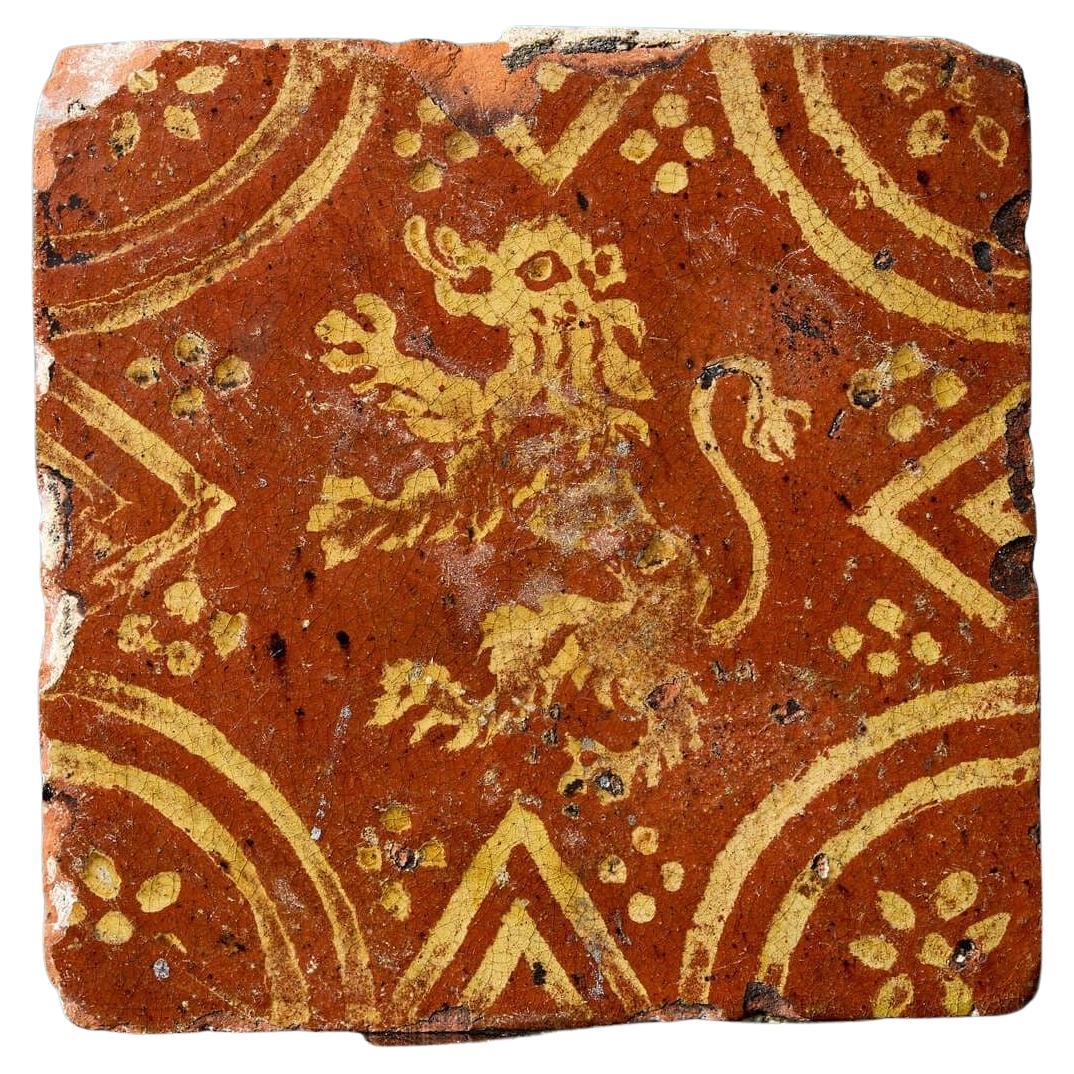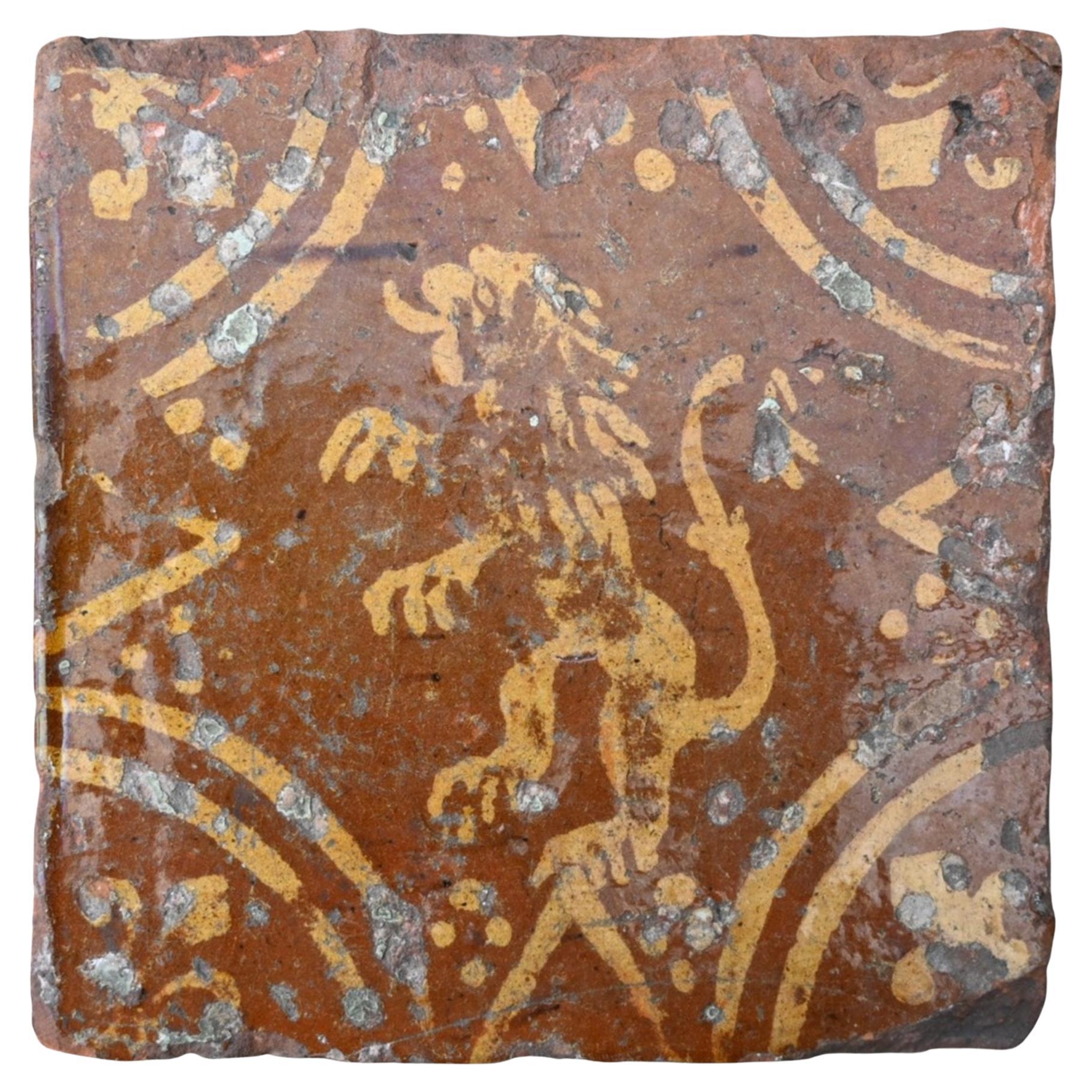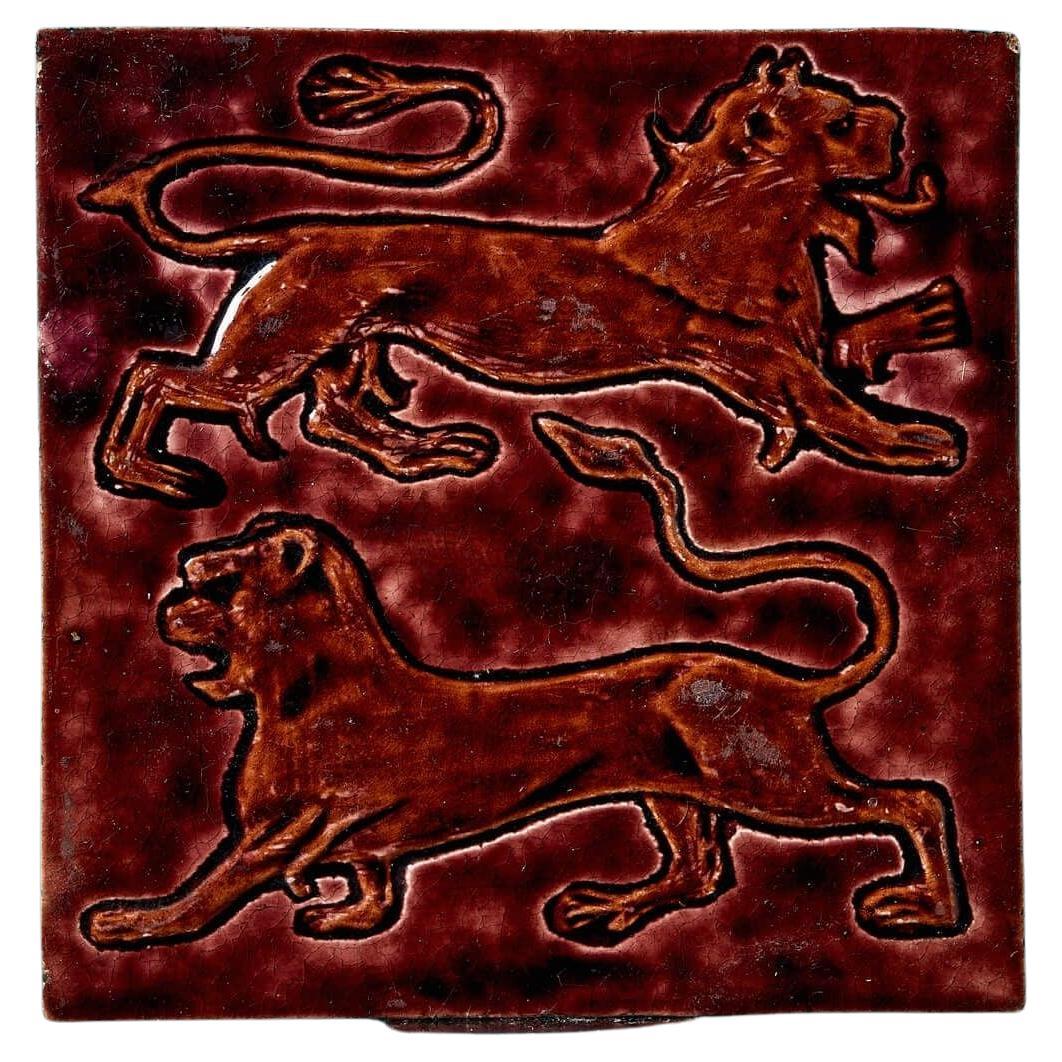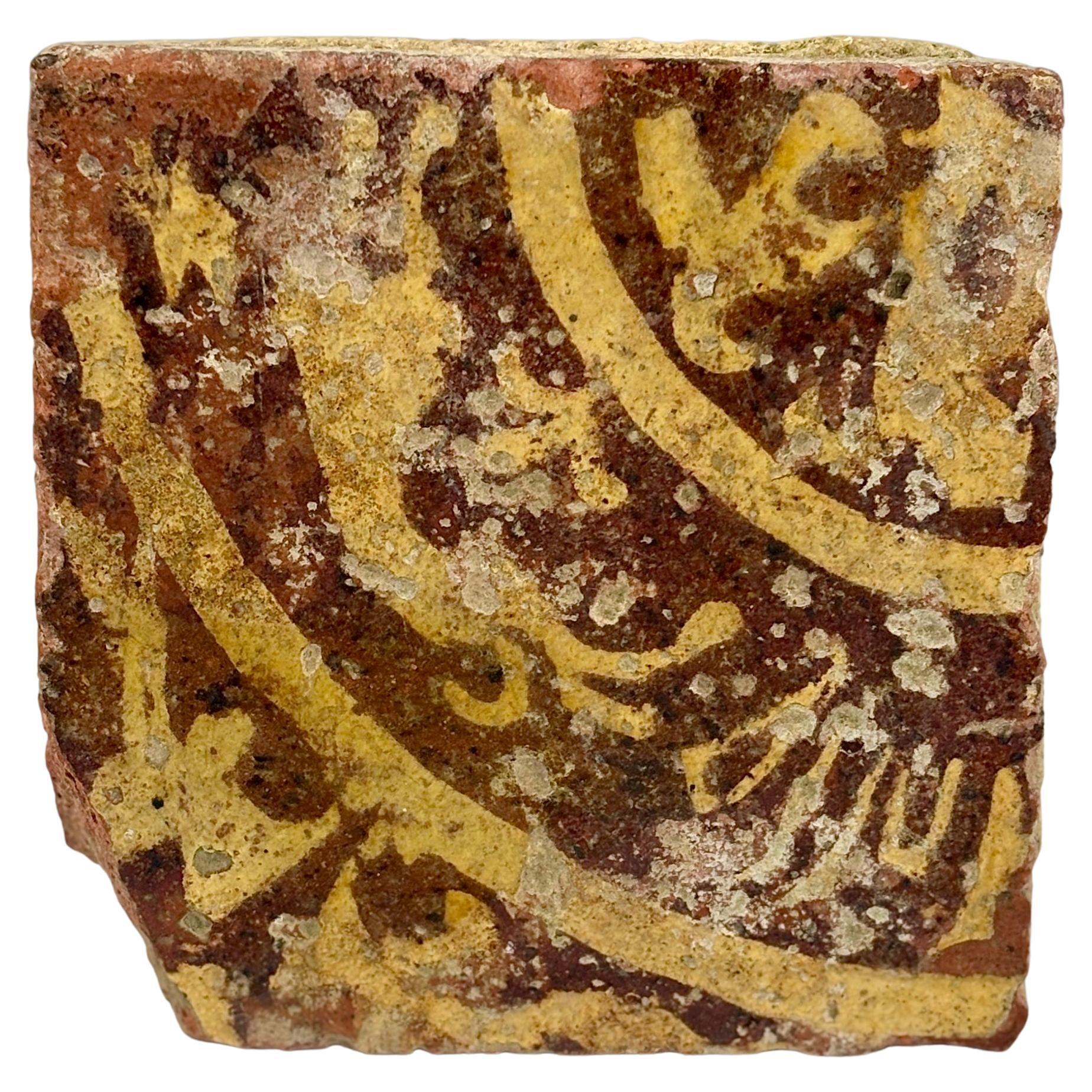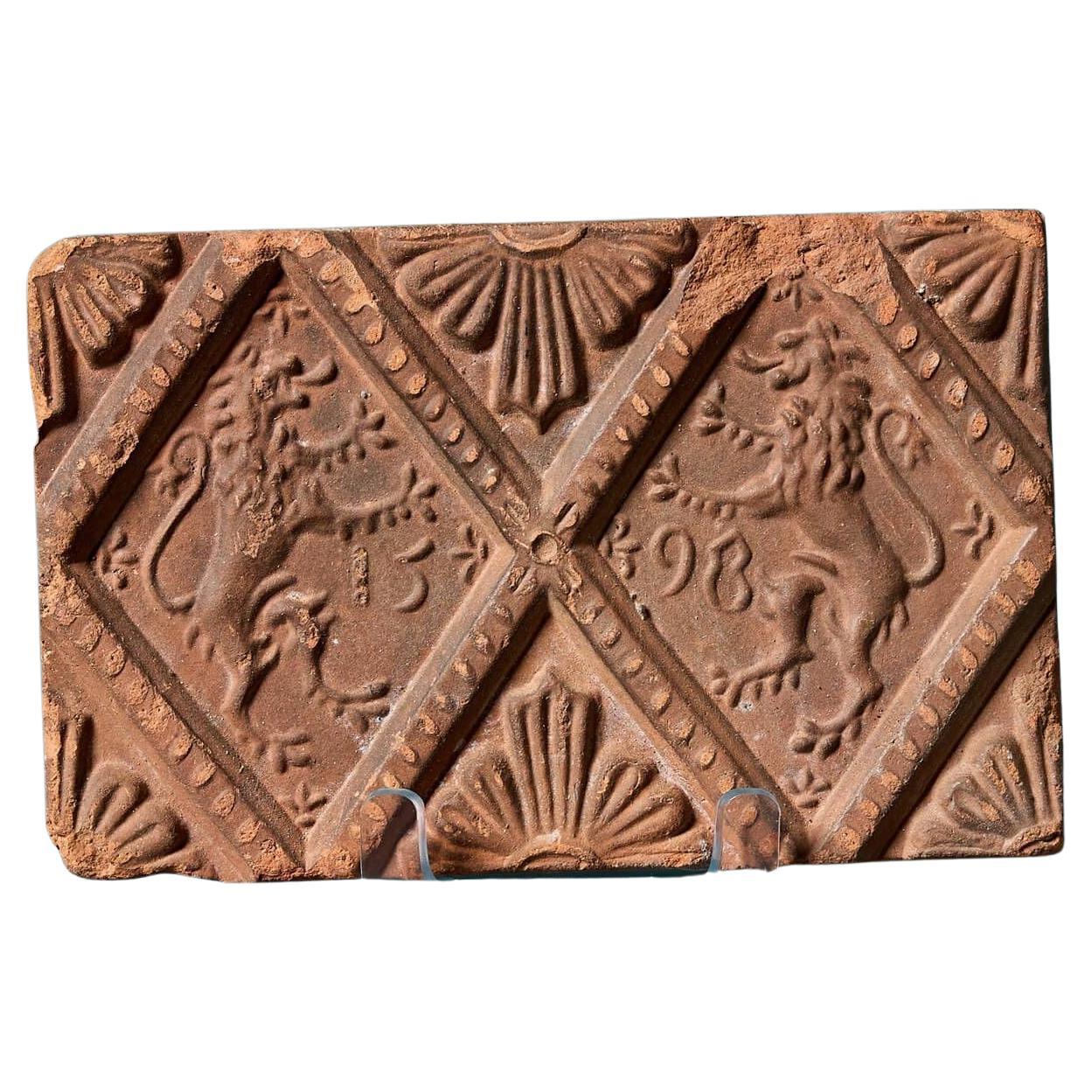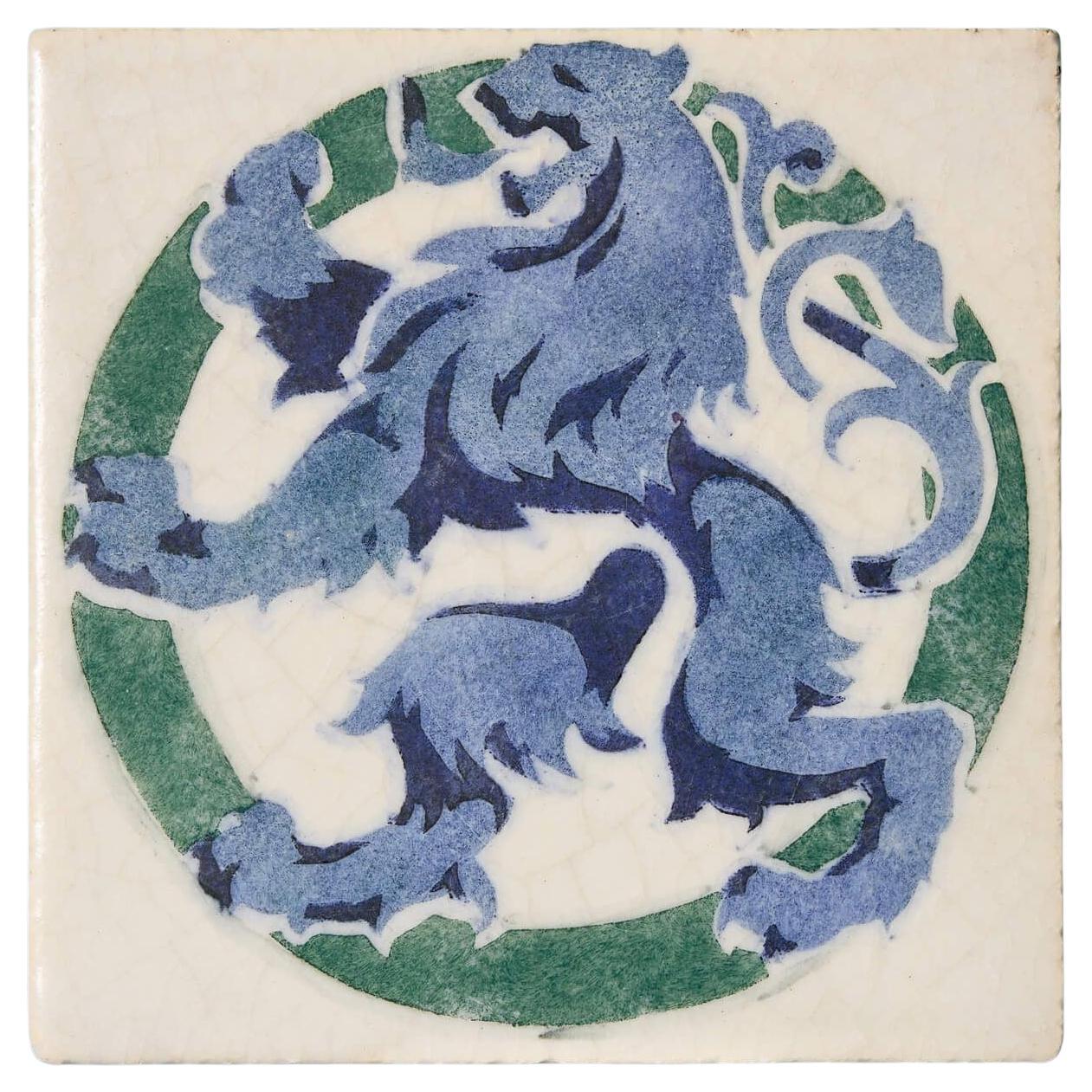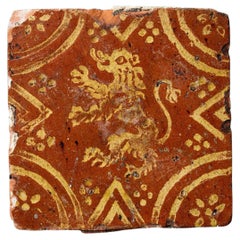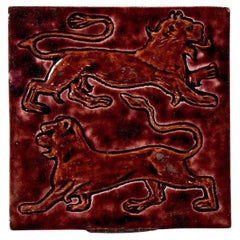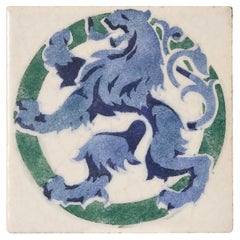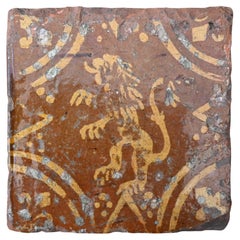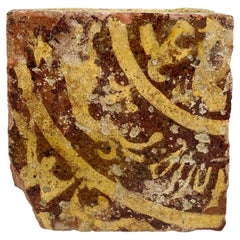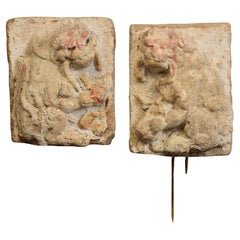Items Similar to 16th Century Late Medieval Encaustic Tile with Rampant Lion
Want more images or videos?
Request additional images or videos from the seller
1 of 5
16th Century Late Medieval Encaustic Tile with Rampant Lion
$1,169.26
£875
€1,015.03
CA$1,648.97
A$1,811.69
CHF 946.80
MX$21,605.88
NOK 11,989.04
SEK 11,168.80
DKK 7,584.78
About the Item
A 445-year-old late medieval 16th century encaustic tile of Flemish origin (unmarked), detailed with a rampant lion. Made from terracotta and glazed, this 6-inch antique tile is an excellent collector’s piece, dating from circa 1580 when Philip the II of Spain was rule of Flanders, while Elizabeth I was Queen of England.
One of two similar we are selling, this heraldic tile is decorated with a rampant lion, facing right, surrounded by a border of lines, arches and dots resembling flowers.
A true antique that has stood the test of time for more than 4 centuries, historic wear only adding to its ancient beauty.
- Dimensions:Height: 5.71 in (14.5 cm)Width: 5.71 in (14.5 cm)Depth: 0.52 in (1.3 cm)
- Style:Medieval (In the Style Of)
- Materials and Techniques:
- Place of Origin:
- Period:
- Date of Manufacture:1580
- Condition:Good structural condition. Surface wear. Chips and losses. Wear to glaze. Traces of mortar to sides and backs. No signs of repair.
- Seller Location:Wormelow, GB
- Reference Number:Seller: 367351stDibs: LU2096346140882
About the Seller
4.9
Platinum Seller
Premium sellers with a 4.7+ rating and 24-hour response times
Established in 2006
1stDibs seller since 2016
761 sales on 1stDibs
Typical response time: 5 hours
- ShippingRetrieving quote...Shipping from: Wormelow, United Kingdom
- Return Policy
More From This Seller
View All16th Century Late Medieval Heraldic Encaustic Tile
Located in Wormelow, Herefordshire
A 445-year-old late medieval 16th century heraldic encaustic tile of Flemish origin (unmarked). Made from terracotta and glazed, this 6-inch antique tile is an excellent collector’s ...
Category
Antique 16th Century Dutch Medieval Mounted Objects
Materials
Terracotta
William De Morgan Antique Heraldic Lion Tile
By William De Morgan
Located in Wormelow, Herefordshire
A 6 and ¼ inch antique heraldic lion tile designed by William De Morgan, impressed to the reverse with the rose mark of Sands End Pottery, Fulham.
Dating fr...
Category
Antique Late 19th Century English Victorian Mounted Objects
Materials
Clay
Renaissance Style Terracotta Tile with Lions in Relief
Located in Wormelow, Herefordshire
A late 19th century Renaissance style terracotta tile decorated with two rampant heraldic lions. It is spuriously marked with the date ‘1598’, more likely dating between 1875 and 190...
Category
Antique Late 19th Century English Renaissance Revival Mounted Objects
Materials
Terracotta
Reclaimed Carter & Co Tile of Heraldic Lion
Located in Wormelow, Herefordshire
A reclaimed Carter & Co of Poole Pottery tile featuring a stylised heraldic lion rampant.
Although this tile is unmarked, a similar example is on display in the collection of the Cleveland Museum of Art, Ohio, and was purchased from Carter & Co in 1926.
Detailing a hand painted stylised blue lion within a green wreath before an off-white background, this 5 inch collectors tile is a stunning decorative interior piece for display or part of a collector’s cabinet.
Carter & Co
Carter Tiles, later Carter & Co, was founded in 1873 by Jesse Carter, a builder’s merchant and ironmonger from Surrey, who bought James Walker’s brick and tile business on the East Quay at Poole.
By the 1880’s Carters...
Category
Early 20th Century English Mounted Objects
Materials
Clay
Pair of Antique English Encaustic Medieval Tiles c.1400
Located in Wormelow, Herefordshire
A pair of antique English encaustic medieval tiles, sourced from a private collection, Oxfordshire, dating to the 14-15th century.
The set com...
Category
Antique 15th Century and Earlier English Medieval Mounted Objects
Materials
Clay
Set of 4 Medieval Style Terracotta Rampant Lion Tiles
Located in Wormelow, Herefordshire
A stunning set of 4 identical medieval style terracotta tiles decorated with raised rampant lions and foliage within scalloped borders, dating to circa 1920. These antique tiles are ...
Category
Early 20th Century Belgian Medieval Mounted Objects
Materials
Terracotta
You May Also Like
Medieval Tile From Gravensteen (counts' Castle) – Ghent – 14th–15th Century
Located in Bilzen, BE
Medieval floor tile from the Gravensteen Castle – Ghent, 14th–15th century
Rare red earthenware floor tile decorated with a heraldic lion, incised and inlaid with yellow slip under ...
Category
Antique 15th Century and Earlier Belgian Gothic Historical Memorabilia
Materials
Ceramic
14th Century Medieval Encaustic Slip Glazed Floor Tile
Located in Pease pottage, West Sussex
Encaustic Medieval Floor Tile, with impressed and inlaid slip filled decoration.
14th Century, wear and condition commensurate with age, minor loss to one corner.
Category
Antique 15th Century and Earlier French Medieval Flooring
Materials
Stoneware
Antique Relief Tile Panel in the Style of J. Parentani, 1890
By Sarreguemines
Located in Rijssen, NL
Stunning Art Nouveau/ Arts & Crafts tile panel from the superb firm, Craven Dunnill, & Co., Ltd, Jackfield Salop, England, circa 1905, in a bright celadon. This quantity original jug...
Category
Antique 1890s French Medieval Architectural Elements
Materials
Earthenware, Pottery
10th - 12th Century, Song Dynasty, A Pair of Antique Chinese Pottery Lion Panel
Located in Sampantawong, TH
A pair of Antique Chinese pottery lion panel with stand.
Age: China, Song Dynasty, 10th - 12th Century
Size excluding stand: Height 23.6 - 24.3 C.M. / Width 18.8 - 20.5 C.M. / Thick...
Category
Antique 15th Century and Earlier Chinese Antiquities
Materials
Pottery
Vintage Regency Terracotta Lion Plaque
Located in W Allenhurst, NJ
Great terracotta plaque with etched Lion. Lion in all its splendor etched into terracotta placard. Nicely detailed with a lot of character. Elegant yet whimsical. Artist signed.
Category
20th Century Unknown Regency Figurative Sculptures
Materials
Terracotta
Antique Fireback / Backsplash, Coat of Arms Lions
Located in Haarlem, Noord-Holland
Antique fireback / backsplash, coat of arms lions.
Nice square cast iron antique fireback displaying a the coat of arms with two lions.
Great co...
Category
Antique Late 18th Century French Louis XVI Architectural Elements
Materials
Iron
More Ways To Browse
Medieval Antique
Antique Brown Tiles
Lion Rampant
Terracotta Tiles Used
Elizabeth I
Antique Terracotta Lions
16th Century Tile
Medieval Lion
Used Furniture Belmont Ma
Vintage Chinese Opera Theatre Headdress
William Tolliday
Zapotec Sculpture
Ahl Design
Antique Crosscut Saws
Antique Grain Platform Scale
Bronze Tikar
Flint Dagger
Glass Sphere On Stand
